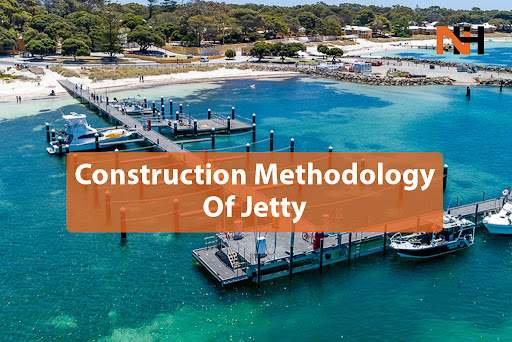
◈ Construction Methodology of a Jetty
A jetty is a vital structure in coastal engineering and maritime infrastructure, serving as a protective barrier, a berth for vessels, and a key component of port facilities. Constructing a jetty is a complex task that requires careful planning and precise execution. In this article, we will explore the construction methodology of a jetty, breaking down the process into its key phases and discussing the materials, equipment, and techniques involved.
Planning and Design
Feasibility Studies
Before embarking on the construction of a jetty, a comprehensive feasibility study is essential. This study should consider various factors, including tidal patterns, sediment transport, vessel traffic, environmental impact, and economic viability. These studies inform the design and ensure the jetty's functionality and sustainability.
Design Phase
The design phase involves the creation of detailed plans and specifications for the jetty. These plans are typically developed by specialized coastal and structural engineers. The design must take into account factors such as wave loads, wind forces, soil conditions, and the intended use of the jetty. A critical decision in this phase is selecting the type of jetty: whether it will be a solid or pile-supported structure.
Site Preparation
Clearing and Excavation
Site preparation begins with clearing the area where the jetty will be constructed. Vegetation and obstacles are removed, and the site is excavated to the required depth. This phase is crucial for creating a stable foundation for the jetty.
Dredging
In areas with a shallow seabed, dredging may be necessary to create the desired water depth for the jetty. Dredging involves removing sediments and sometimes rocks from the seabed using specialized equipment.
Foundation Construction
Pile Installation
For pile-supported jetties, piles are driven into the seabed to serve as the foundation. Piles can be made of steel, concrete, or timber, depending on the project's specifications. This phase requires precision to ensure that the piles are vertically aligned and adequately spaced.
Concrete Placement
In the case of a solid jetty, concrete is used to create a continuous foundation structure. Formwork is set up, and concrete is poured and cured. The curing process is essential for the concrete to attain its design strength.
Superstructure Construction
Deck Construction
The deck of the jetty is where cargo handling and vessel berthing occur. It is typically made of reinforced concrete or steel. Construction involves placing concrete or steel beams, followed by the deck surface. The deck should be designed to withstand the loads imposed by cargo and vehicles.
Fender System Installation
Fender systems are crucial components of a jetty, as they absorb the impact energy when vessels berth. They are typically made of rubber or foam and are installed along the edge of the jetty. Fender systems come in various designs to suit different vessel types and sizes.
Finishing and Ancillary Works
Navigation Aids
The safety of vessels using the jetty is of paramount importance. Navigation aids such as lighting systems, beacons, and radar reflectors are installed to guide vessels during the day and night, ensuring safe navigation.
Mooring and Bollards
Bollards and mooring equipment are installed along the jetty to secure vessels while berthed. These are strategically placed to accommodate various vessel sizes and mooring requirements.
Dredging and Maintenance
After the jetty is completed, periodic dredging may be required to maintain the required water depth. Routine maintenance, including inspections, repairs, and surface treatments, is essential to extend the jetty's service life.
Environmental Considerations
Construction of jetties can have a significant impact on the surrounding environment. To mitigate these effects, environmental safeguards must be put in place. This may include sediment control measures, wildlife protection, and adherence to environmental regulations.
Conclusion
The construction of a jetty is a complex and multifaceted process that demands careful planning, engineering expertise, and skilled labor. It plays a crucial role in enhancing coastal infrastructure and supporting maritime trade. Successful jetty construction is not only about creating a functional structure but also about minimizing environmental impacts and ensuring long-term sustainability. By following the proper construction methodology, jetties can serve as safe and efficient transportation hubs for years to come.
For more information on jetty construction, you
can refer to [Coastal Engineering
Guidelines]
